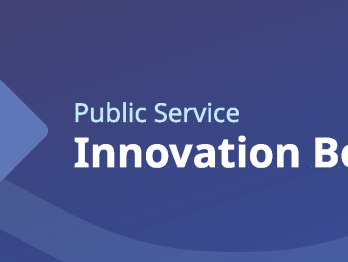Innovation Networks: learning from a convening of conveners

How do you coordinate and convene a public sector innovation network? How do you connect people whose common interest is difference?
Recently, we started to compile a catalogue of public sector innovation networks from around the world, in recognition of the important and valuable role that such networks can play. There are quite a number now, and in response to questions from some of the coordinators of the networks, we decided to hold a meet-up of public sector innovation network conveners. The following covers some of the insights that came up and that might be of interest more generally.
Commonalities and contextual differences
The experiences shared in the discussion helped to show that while there are some universal elements, there are also many contextual differences, relating to the aims of the network, the differing levels of maturity of networks and how the fit in their broader ecosystems. Some things are likely common for all, while for many other things networks need to be able to adapt and change to their specific setting and purpose. We are keen to understand this better, so I share some of the things that came up in the conversation.
The value of networks
Why have such a network? In addition to the roles that I discussed in our blog, there were some shared reasons about the value that people (as participants and as conveners) get out of these networks:
- Inspiring others, and the excitement when members realise they are not alone
- Finding good stories that can unlock the energy and passion of others
- Making a difference and helping people see that there is good stuff going on in the public sector
- Learning new things and getting to know people who are interested in innovation
- Connecting with others with similar challenges, and seeing what people can do together across a network
- Creating safe spaces for people to be open and honest with each other, to learn
- Gathering people that share the same enthusiasm, willing to share experiences to make things really happen, even small changes
- Accelerating learning about innovation
- Building the confidence of people in the network to try new things.
Things to consider in convening a network
There were a number of things about how to best facilitate and support such a network. These included that it is valuable to:
- Welcome and connect with new members. Such networks are not commonplace, and it can be an unusual way of engaging for some, so do not assume that everyone will know how to best be a part of the network.
- Help set and clarify expectations. For instance, a network is different from traditional ‘command and control’ bureaucratic approaches but for many in the public sector the latter is still the dominant mindset. Switching to a more relational approach, where value is co-created and the power of the network is more in connecting people and ideas than in delivering a specific project, can require a shift in thinking and behaviours.
- Have someone responsible for the network and active in engaging members. While there might be passion and sometimes excitement, the network will not run itself.
- Capture data/intelligence about the value and contribution of the network and its offerings from early on. Networks do not fit with many of the traditional key performance indicators and it may not be easy to reflect the value that can come (changing people’s mindsets, their understanding and belief of what is possible, giving them new perspectives and tools to help engage with difficult problems) in a form that is easily relayed to senior management or external audiences.
- Have a clear objective for the network – although recognise that this might change over time. A clear objective will make it easier to know who your audience is, what participation is expected or sought, and make it easier to describe to others the role and value of the network. However, this objective might shift or change completely over time as the network needs to position itself within a broader context.
- Do not make the network too complicated or too rigid. A network will need to adjust and change due to context and to needs. Some networks may start informally, then become formal and later become informal again, or vice versa. Some may start small and then build in sophistication. The network needs thus to be flexible and members will need to find it easy to engage even as the network evolves and shifts.
- Do not expect too much from most members. Networks often fulfil the ‘90:9:1 rule’ of participation, where only a small proportion of people will be actively involved, and it can also be hard for people to make time for innovation. Therefore, a network should be modest in its expectations of the majority, although a smaller more active group may well be very active and able to empower and activate the broader community in other ways.
- Involve your sponsors and patrons. This is not only so that they can understand the work of the network, but also so that they feel and are seen as connected to it, and thus might have more engagement with, and support of, the network’s activities. An innovation network will likely be different to many of their other responsibilities or things that they oversee. Often it is not enough with innovation to be told about it, as the experiential element can be vital in really seeing what is happening.
- Try to avoid being in the position of only relying on one patron/sponsor. As an innovation network can be a bit different, and therefore may find it harder to formally assess its value and contributions or to convey its role, it can be easy for such a network to find itself in trouble after a change of sponsor or patron. Institutional support may be best if possible, although this will not always be easy, especially if the network is more informal in nature.
Trade-offs for networks
The discussion also flagged some areas where there are no easy answers or prescriptions for networks, but rather a need to balance competing tensions (many of which are familiar for other innovation work). These included the following:
- Formality vs informality. Informal networks are easy to start with, as they can be casual things set up, perhaps more as a ‘light touch’ social forum at first. Informal approaches have advantages in they have low governance overheads (i.e. you rarely need to ask permission or resources for them) and are often flexible, driven by the interest(s) of those involved. However, there are limitations to informal approaches, as it can be difficult to scale, support and resource a large informal network or for it to have the legitimacy / ‘stamp of approval’ of leadership or to form meaningful long-term relationships with other parts of the innovation system/eco-system. While an informal network can be more flexible and agile, a formal network can often support greater sophistication and help promulgate wider scale change efforts. However, every context will be different, and the appropriate form (or even mix) will likely change over time.
- Edge vs mainstream. A public sector innovation network can help push the boundaries but the more it does so, the more difficult it might be to help make parts of the innovation process more mainstream. Equally, the more that the network focuses on the ‘normal-adjacent’ as opposed to the more radical and emergent, then the more it is unlikely to be looked to as a source of the bleeding-edge. Again, the right mix will depend upon the context and the aims, but it can be difficult for a network to both have the legitimacy to help bring things into the mainstream and the edge capability to introduce the truly new.
- Practitioners vs dabblers. Equally, it might be challenging for a network to equally serve the ‘innovator’ crowd as opposed to others who are more interested in finding new solutions for the issues they are working on. Innovation practitioners may expect the network to be a source of empathy, understanding and advice for the issues that come with trying to introduce the new, whereas others may be more interested in practical examples and ‘cookie-cutter’ solutions that they can adopt or adapt to their situations. There will always be a mix of those who are more experienced in innovation as a practice and those less so, but this may be harder to manage if the expectations are not clear and if everyone does not approach the network with a shared sense of learning.
- Action vs mindset. A lot of what a network can do is to help members expand their awareness of the possible, to become acquainted with new tools and practices, and to gain a richer appreciation of the process and practice of innovation. This can be done through helping people connect with others, through capability building activities or many other ways. Yet, a network can also sometimes provide a forum for shared action, whether it might be an experiment across the system or helping with a particular element of an innovation strategy. The most appropriate mix will again vary depending on a range of factors.
Next steps
We invite any other such networks to add themselves to the list – any conveners whose network is added to the list will be invited to future convenings of conveners. In addition, if anyone has any other guidance for those coordinating and convening public sector innovation networks, please let us know. Over time, we will look at providing more formalised guidance, drawing on the lessons of others and the experiences of the network conveners.












